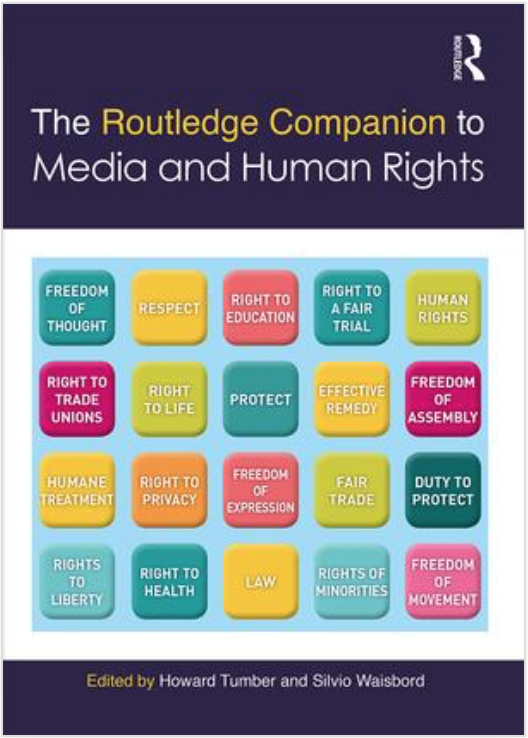
Submitted by Dr E. McPherson on Wed, 27/09/2017 - 12:57
I'm delighted to announce the publication of The Routledge Companion to Media and Human Rights, edited by Howard Tumber and Silvio Waisbord and for which I have contributed a chapter: 'Social Media and Human Rights Advocacy.'
The rise of social media has seen its concomitant celebration as a ‘liberation technology,’ namely a technology that supports social, political, and economic freedoms (Diamond, 2010). This chapter provides a framework for understanding how the use of social media intersects with the practice of human rights advocacy at NGOs. This framework is not to deny the disruptive possibility of human rights advocacy conducted over social media, but rather to ground related techno-optimism in the broad and complex terrain that influences this potential (Youmans and York, 2012; Madianou, 2013). This chapter begins by arguing that the view that social media liberates advocacy by creating new pathways to visibility rests on an incomplete conception of visibility, one which focuses on the production of communication and overlooks the corresponding transmission and reception of that communication necessary for visibility to take place (Hindman, 2010).
The visibility of human rights advocacy can be understood as depending on the logics of the social media field, the target audience fields, and the political field(s) across and within which human rights communication takes place. This chapter overviews this field theory approach to communication before outlining in broad strokes what we know about each of these logics. Equally important, however, is what we don’t know. For different reasons, each of these logics is somewhat inscrutable – that of the social media field because of its novelty, mutability, and proprietary secrecy; those of target audience fields because social media advocacy effects are both hard to isolate and under-researched; and those of political fields because surveillance tactics are often covert. All of this inscrutability creates risk, and risk, as we shall see, is anathema to visibility. One of the benefits of the field approach is its concern with inequality (Bourdieu, 1993). As an actor’s ability to mitigate risk corresponds to his or her resources, it may be that – instead of being a leveler – social media advocacy is exacerbating inequalities of visibility within the human rights field (Beck, 1992; Mejias, 2012; Thrall, Stecula and Sweet, 2014). The chapter concludes by sketching a research agenda for the use of social media in human rights work.
A preprint version of the chapter is available here, and the book is available to order here.
